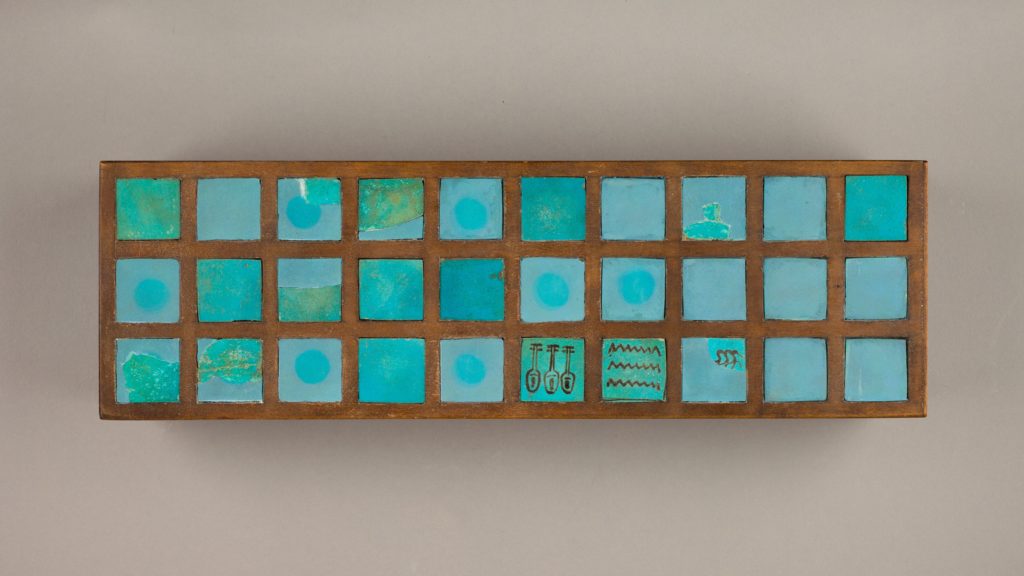The Senet game in the funerary sphere was a path to eternity.
The deceased played alone this “countdown” to the eternal life. To arrive to the last square meant that he or she was going to live forever.
At that point the decoration on the last three squares of the board are crucial to understand the end of the game.
Evidences of the Senet Game.
This board game is documented from the Old Kingdom in a relief of the tomb of Pepi-Ankh in Meir. Two men are playing the senet on the floor while having a relaxed dialogue. In the scene we can just see clearly the board and the tabs, but no decoration at all.

In the Brooklyn Museum there is a senet board dating from the Middle Kingdom and made of faience. The provenance is unknown, so we are not sure if it was part of a funerary equipment. The board has no decoration at all and it has 21 sqaures instead 30.

From the New Kingdom the senet boards which has remained show usually 30 squares (3 rows of 10 each). Moreover the last five squares have what semms to be a religious decoration or inscription, although at the begining it seemed to be quite simple. This is the case of the senet borad of Amenhotep III (Dynasty XVIII).

This point help us to understand very well the funerary finality which this game had for the dead.
The Decoration in the Senet Game.
Later examples of senet game show a more explicit decoration in the last five squares:
Square 26 usually were inscribed with the hieroglyph nfr (“good”,”nice”, “beautiful”, “well”, “happy”) or in plural neferu. According to scholars it was a safety place for the player.
Square 27 had usually the hieroglyph of the water mww. It is accepted that this was a negative square because the player had to remove his piece.

Square 28 was related to the divinity sphere. In some cases it was just inscribed with the number three hierglyph of god, but later the decoration included the hieroglyph bau (“souls). By the late New Kingdom it could show three deities or divine symbols. According to scholars a piece had to leave this square when dices threw a three.

Square 29 was always dual. It could be inscribed with number two or later on with two human figures. Supposedly the player had to live it if the dices casted number two.
Square 30 was usually decorated with the image of Ra-Horakhty. The winner might be the one whose pieces reached (for some passed) this last square.
Until here the “secular” exposition of this game. But, the main partofremains come from the funerary sphere and the decoration and/or inscriptions in those lasts five squares of this game could also have a mithycal or religious explanation.
…in the next post.
